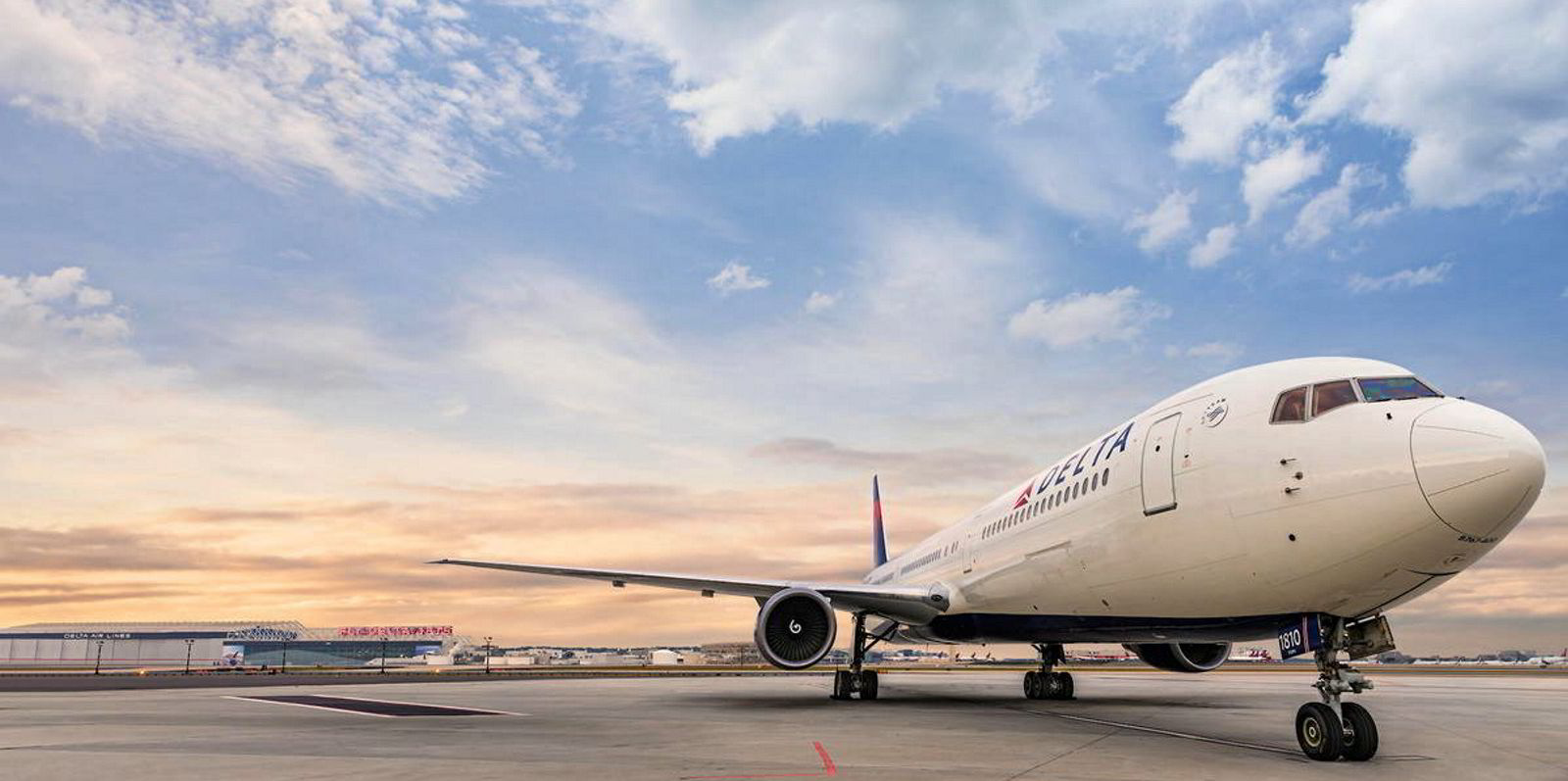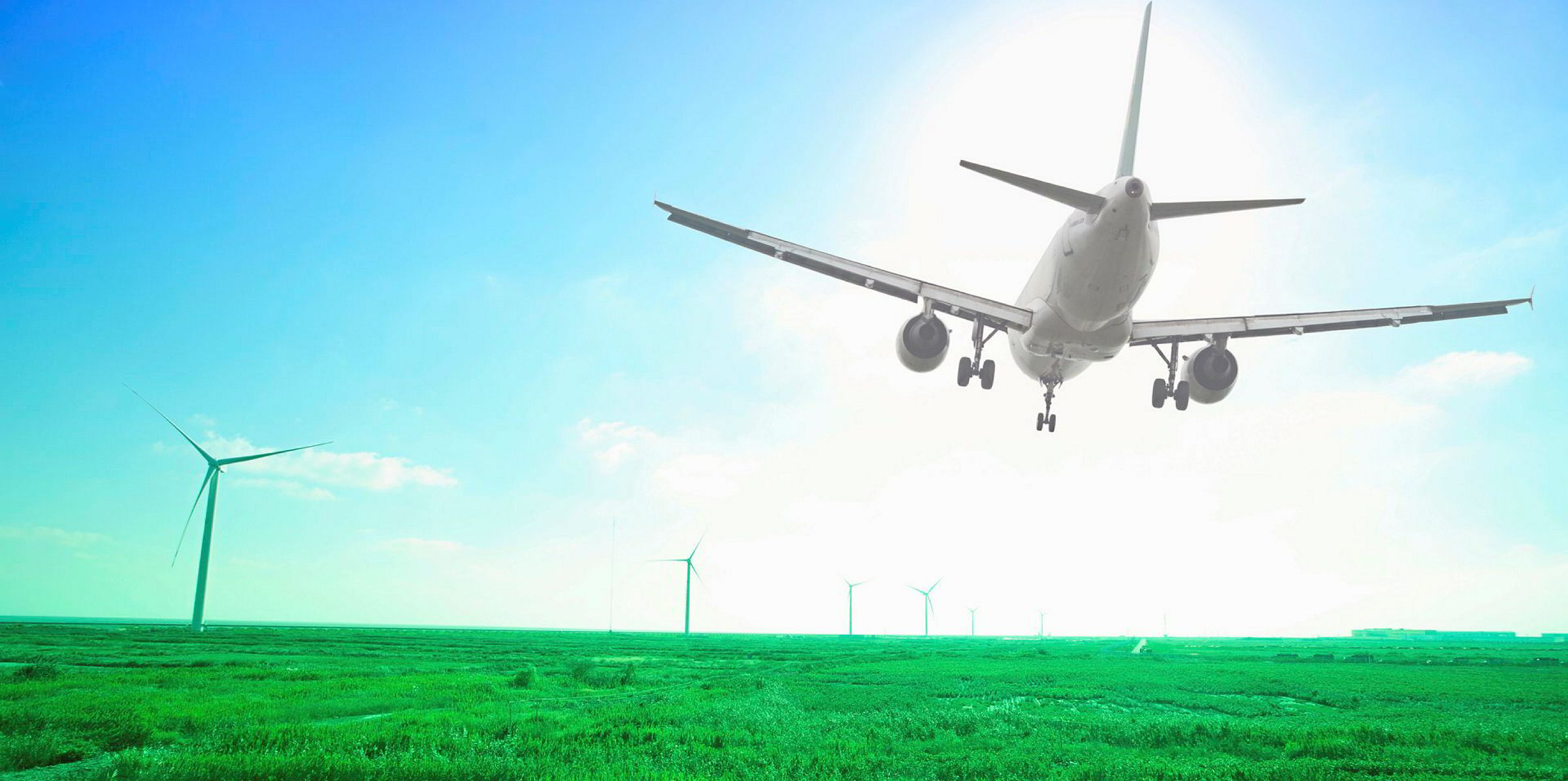The SAF will be made by combining cellulosic biomass and renewable H2 using Fischer-Tropsch method

Delta aircraftPhoto: Chris Sweigart/Delta
American airline Delta is to buy 385 million gallons of green hydrogen-derived sustainable aviation fuel (SAFs), the largest deal of its kind made by a US airline and a major step forward for producers looking to make green biofuels with renewable H2.
Fuel for the deal will be made using a version of the Fischer-Tropsch (FT) process, which chemically pairs carbon monoxide and hydrogen to produce synthetic hydrocarbons.
Supply will come from a new FT plant planned by US producer DG Fuels in Louisiana, furnished with an 839MW electrolyser to supply the hydrogen. Construction on the plant is due to begin in 2023, with first SAF production in the second half of 2026.
The largest hydrogen electrolyser installed globally to date is a 150MW machine in central China, while a bigger 260MW unit is currently under construction in northwest China.
Power for DG Fuels’ 839MW electrolyser will be sourced from solar plants and verified by Renewable Energy Certificates, DG Fuels CEO Michael Darcy, tells Recharge. The scheme will apply for hydrogen tax credits under the Inflation Reduction Act (IRA), but the Delta deal was already agreed before the IRA was announced, he adds.
Delta will buy 55 million gallons of the fuel per year for seven years from 2027, pushing the company further towards its goal of procuring more than 400 million gallons of SAF annually by 2030 — the equivalent of 10% of its yearly fuel consumption.
Article continues below the advert
As of 2021, Delta had secured more than 40% of that goal through offtake agreements. The DG Fuels deal — assuming it has not already been counted — would take that to around 54%.

SPECIAL REPORT | Can renewables make airlines carbon-free by 2050?Read more
Fischer-Tropsch
DG Fuels’ FT process utilises a carbon monoxide-heavy syngas made by processing cellulosic biomass —organic material such as plant or tree waste — at high temperatures and without oxygen to produce carbon monoxide and other gases, water and tar, and a small amount of hydrogen.
This syngas is then mixed with renewable hydrogen produced from the 839MW electrolyser and passed through a metal catalyst causing “polymerisation”, where the carbon monoxide and hydrogen molecules join together to form synthetic hydrocarbons. Further refinements then burnish them into SAFs.
According to Darcy, the process represents a departure from other FT processes for SAF, which typically source all the hydrogen from the organic material used to make the syngas, which would usually be a balance of carbon monoxide and hydrogen at a ratio of roughly 2:1.

ANALYSIS | Why the US climate bill may be the single most important moment in the history of green hydrogenRead more
By tweaking gasification so the syngas is richer in carbon monoxide and then adding hydrogen from an electrolyser, DG Fuels can optimise its SAF output by a factor of almost four, with 97% of the carbon from the biomass ending up in the fuel, the company claims.
Waste water from the FT process is then used in the electrolyser, which will be supplied by Norway’s HydrogenPro.
Currently the aviation biofuel market is dominated by waste-oil-derived biofuels such as HEFA-SPK (hydroprocessed esters and fatty acids synthetic paraffinic kerosene) — in fact, more than 95% of biofuel flights to date have used HEFA-SPK fuel.
But FT technologies are catching up. In May this year, Fulcrum Bioenergy began operations at its FT-based transport fuel plant in Nevada, which uses municipal waste as a feedstock.
So far, the largest SAF commitment from an airline was made by United Airlines last year when it agreed to buy 1.5 billion gallons over 20 years from Alder Fuels, which is developing technology with US manufacturer Honeywell to make SAFs from waste forestry products via pyrolysis.
RELATED NEWS
Shanghai goes all-in on hydrogen, with plans for H2 port, pipelines and trading platform
Energy Transition
31 August 2022 19:10 GMT
Green hydrogen + captured CO2 | 'Unique and powerful' joint venture aims to produce 80,000 tonnes of aviation e-fuel annually
Energy Transition
25 July 2022 14:28 GMT
'Outrageous greenwash' | No clear role for hydrogen as critics slam UK's net-zero aviation strategy
Energy Transition
20 July 2022 16:55 GMT
Timing is key | Green hydrogen could 'supply 32% of aviation energy demand by 2050'
Energy Transition
20 July 2022 12:12 GMT
'Hydrogen long-term solution to net-zero target' | Airbus CEO sees first H2 planes on regional routes
Wind
18 July 2022 10:14 GMT
6 September 2022 13:03 GMT UPDATED 6 September 2022 13:03 GMT
By Rachel Parkes
Shanghai goes all-in on hydrogen, with plans for H2 port, pipelines and trading platform
Energy Transition
31 August 2022 19:10 GMT
Green hydrogen + captured CO2 | 'Unique and powerful' joint venture aims to produce 80,000 tonnes of aviation e-fuel annually
Energy Transition
25 July 2022 14:28 GMT
'Outrageous greenwash' | No clear role for hydrogen as critics slam UK's net-zero aviation strategy
Energy Transition
20 July 2022 16:55 GMT
Timing is key | Green hydrogen could 'supply 32% of aviation energy demand by 2050'
Energy Transition
20 July 2022 12:12 GMT
'Hydrogen long-term solution to net-zero target' | Airbus CEO sees first H2 planes on regional routes
Wind
18 July 2022 10:14 GMT
6 September 2022 13:03 GMT UPDATED 6 September 2022 13:03 GMT
By Rachel Parkes
No comments:
Post a Comment